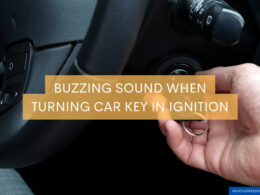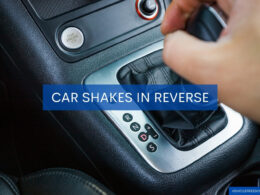In This Article Show
Highlight ✌
- Floating Gears: A method of shifting without using the clutch, often used in trucking.
- Pros and Cons: Enables faster shifts and less clutch wear, but risks include gear grinding and transmission damage.
- Vehicle Compatibility: Best suited for older cars and certain trucks; not recommended for all modern vehicles.
Ah, the world of manual transmissions! If there’s one thing I’ve come to appreciate in my 13 years as a mechanic, it’s the sheer beauty and intricacy of a well-tuned manual gearbox. Now, when it comes to maneuvering through those gears, there’s a particular skill known as “floating gears” that often sparks quite the debate among car enthusiasts.
Having been both under the hood and behind the wheel for over a decade, and with countless hours spent writing blog posts about these experiences, I’ve had the privilege of delving deep into this fascinating topic.
Let me set the stage: imagine not using the clutch to change gears. Sounds unconventional, right? That’s the world of floating gears.
In this post, we’ll demystify this technique. Whether you’re a seasoned driver or just curious about the intricacies of manual transmissions, stick around. Let’s dive in and explore whether floating gears is something you might want to try or understand better.
What Is Floating Gears?
As we plunge deeper into the manual transmissions world, you’ll likely come across various techniques and terminologies. One such term that has been a constant source of intrigue is “floating gears.” But what exactly does it mean?
Floating gears, often referred to as “clutchless shifting,” is the art of changing gears without using the clutch pedal. Surprised? It’s a skill that relies heavily on understanding the sweet spots of your engine’s RPM (Revolutions Per Minute) and timing the shifts perfectly. When executed correctly, the gears can seamlessly mesh without the intervention of the clutch.
Before you wonder if this is some newfangled technique, let me take you on a brief historical detour. Floating gears isn’t a recent discovery. In fact, it has its roots in the world of truck driving. Heavy-duty trucks, especially the older models, were often driven without the continuous use of the clutch pedal for gear shifts.
Truckers adopted this method to ensure smoother drives and reduce fatigue over long hauls.
So, while the term “floating gears” might sound advanced and modern, it’s a technique with a deep-rooted history, adapted and appreciated by many over the years. I can attest to the effectiveness of this method when done correctly.
How Does Gear Floating Work?
To truly grasp the concept of floating gears, it’s essential to have a fundamental understanding of how a manual transmission operates. Don’t worry; I’ll keep it simple.
1. Mechanics behind Synchronizers and Gear Engagement
When you shift gears in a manual transmission, synchronizers help mesh the gears together smoothly. These synchronizers work by matching the speed of the gear you’re selecting with the speed of the gear you’re leaving.
In standard gear-shifting, the clutch aids this process by temporarily disconnecting the engine from the transmission, making the transition smoother. Floating gears bypasses the clutch, relying instead on perfect timing and precise control.
2. The Role of the Clutch
In regular driving, the clutch acts as a mediator between the engine and the transmission. When you depress the clutch, you’re essentially disengaging the engine from the transmission, allowing you to shift gears without any resistance.
However, the clutch is left out of the equation when floating gears. This doesn’t mean it’s entirely unnecessary; it’s still crucial for starting and stopping.
3. Timing and Rev-Matching: The Essentials
The core of floating gears lies in rev-matching and timing. Rev-matching is about aligning the engine speed (RPM) with the speed of the gear you’re shifting into.
When you master this art, you can change gears without needing the clutch, because the speeds are already synchronized.
It’s a bit like dancing; no external intervention is needed when both partners are in perfect harmony. The trick lies in listening to the engine, understanding its rhythm, and shifting at the exact moment when the engine speed matches the transmission speed for the next gear.
In my extensive experience as a mechanic, I’ve seen drivers both master and fumble with this technique. While it may sound daunting initially, it becomes an intuitive process with practice and keen attention to your car’s sounds and responses.
Benefits of Floating Gears
Floating gears isn’t just a fancy technique reserved for show-offs; it comes with its own set of advantages. Over my 13 years as a mechanic and writer, I’ve observed and discussed these benefits firsthand with many drivers and enthusiasts. Here’s a rundown of the key advantages:
1. Faster Shifting
Many drivers’ primary allure of floating gears is the potential for quicker gear shifts. By eliminating the time it takes to engage and disengage the clutch, shifts can be executed in rapid succession. This is especially advantageous in situations requiring quick acceleration or rapid downshifts.
2. Reduced Wear and Tear on the Clutch
While this might be counterintuitive, proficient gear floating can prolong your clutch’s lifespan. A small amount of wear occurs each time the clutch is engaged and disengaged.
You reduce cumulative wear over time by eliminating these engagements during shifts. However, it’s vital to remember that improper gear floating can lead to increased wear on other parts of the transmission. Hence, mastery is essential.
3. Enhanced Driving Experience
For many enthusiasts, floating gears offers a deeper connection with the vehicle. Without the intermediary of the clutch, drivers often feel more in-tune with the mechanics of their car. They become more attuned to the engine’s sounds, the car’s rhythm, and the overall driving experience becomes more immersive and rewarding.
4. Efficiency on Long Drives
As touched upon earlier, the technique of floating gears has its roots in truck driving. Long-haul truckers often use this method to reduce fatigue and ensure more consistent speeds on highways. Similarly, in cars, once you get the hang of it, floating gears can make those long drives smoother and less tiring.
To wrap it up, while the advantages of floating gears are evident, it’s essential to remember that they come with their own set of challenges. Mastery and understanding of your vehicle are paramount.
From my extensive experience in the field, I can vouch for the fact that, when done right, floating gears can elevate your driving experience to a whole new level.
Risks and Drawbacks Of Floating Gears In Cars
Floating gears isn’t just a fancy technique reserved for show-offs; it comes with its own set of advantages. I’ve observed and discussed these benefits firsthand with many drivers and enthusiasts. Here’s a rundown of the key advantages:
1. Faster Shifting
Many drivers’ primary allure of floating gears is the potential for quicker gear shifts. By eliminating the time it takes to engage and disengage the clutch, shifts can be executed in rapid succession. This is especially advantageous in situations requiring quick acceleration or rapid downshifts.

2. Reduced Wear and Tear on the Clutch
While this might be counterintuitive, proficient gear floating can prolong your clutch’s lifespan. A small amount of wear occurs each time the clutch is engaged and disengaged.
You reduce cumulative wear over time by eliminating these engagements during shifts. However, it’s vital to remember that improper gear floating can lead to increased wear on other parts of the transmission. Hence, mastery is essential.
3. Enhanced Driving Experience
For many enthusiasts, floating gears offers a deeper connection with the vehicle. Without the intermediary of the clutch, drivers often feel more in-tune with the mechanics of their car. They become more attuned to the engine’s sounds, the car’s rhythm, and the overall driving experience becomes more immersive and rewarding.
4. Efficiency on Long Drives
As touched upon earlier, the technique of floating gears has its roots in truck driving. Long-haul truckers often use this method to reduce fatigue and ensure more consistent speeds on highways. Similarly, in cars, once you get the hang of it, floating gears can make those long drives smoother and less tiring.
Conclusion 👍
while the advantages of floating gears are evident, it’s essential to remember that they come with their own set of challenges. Mastery and understanding of your vehicle are paramount. And from my extensive experience in the field, I can vouch for the fact that, when done right, floating gears can elevate your driving experience to a whole new level.
Can You Float Gears In Cars?
The concept of floating gears might seem universally applicable, especially after understanding its mechanics. But, does this mean it’s suitable for every car on the road? Based on my observations and knowledge accrued over the years, the answer isn’t as straightforward as one might hope. Let’s delve into the specifics.
1. Manual Transmissions: A Pre-requisite
First and foremost, floating gears is a technique strictly associated with manual transmissions. Automatic transmissions handle gear changes differently, making the practice irrelevant for them.
2. Older vs. Modern Cars
Many older cars, especially those with less refined transmissions, might be more forgiving when you’re trying to float gears. Their simpler transmission mechanisms often allow for a smoother clutchless shift.
On the other hand, many modern vehicles are designed with intricate transmission systems. These vehicles often have built-in safeguards to prevent mistreatment, making floating gears harder or even counterproductive.
3. Heavy-duty Trucks and Large Vehicles
As previously mentioned, the practice of floating gears finds its roots in the trucking industry. Many truckers still prefer this method to prevent fatigue during long hauls.

However, distinguishing between heavy-duty truck transmissions and those found in standard cars is essential. Trucks, especially older models, were designed to accommodate such shifts, whereas not all cars are.
4. High-performance and Racing Cars
In the realm of motorsports and racing, quick shifts are the name of the game. Some professional drivers float gears to save precious milliseconds. However, these cars are often tailored for such practices, with reinforced transmissions and other modifications to handle the stress.
5. Manufacturer Specifications and Recommendations
Before attempting to float gears in your car, it’s advisable to refer to the owner’s manual or manufacturer’s guidelines. Some manufacturers explicitly advise against certain practices to prevent undue wear or to uphold the vehicle’s warranty.
6. Recognizing the Car’s Feedback
Cars, much like people, have ways of communicating. If, while attempting to float gears, you notice resistance, grinding, or any other unsettling feedback from your car, it might indicate that the vehicle isn’t suitable for such a practice.
In summary
While the technique of floating gears is intriguing and offers numerous benefits, it isn’t a one-size-fits-all solution. Consider your vehicle’s specifications, age, and feedback before deciding if floating gears is the right approach.










